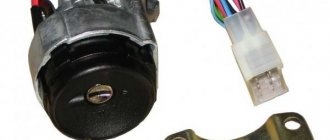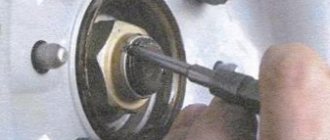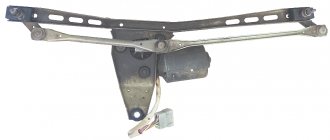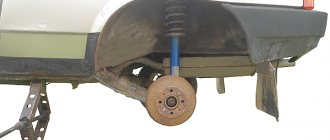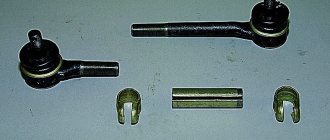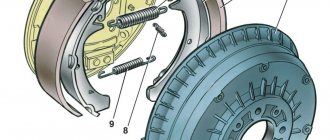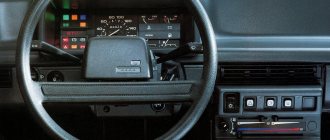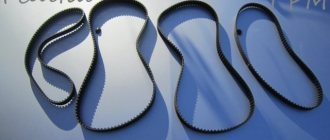Answers (2)
The gas tank of a VAZ 2109 with any engines (1.1, 1.3, 1.5) holds 43 liters of fuel, as indicated in the vehicle’s passport specifications. In fact, very few people pour exactly that much.
fuel tank vaz 2109
Personally, I filled my nine with 47 liters up to the throat. Yes, I know, gas stations don’t top up horribly, but I didn’t come with a dry tank either. I was driving along the highway, there were about 5-7 liters left in the tank, the light just came on. Refueling "Ga...m". Don’t think that it’s “g..but”. But I don’t want to advertise and scold. In general, after 2.5 years of operation, I settled on the figure of 50 liters to the throat.
Many VAZ 2108 2109 21099 owners are interested in how much gasoline can be put in the tank? The operating instructions say 43 liters, but this does not take into account the filler neck. If you fill it until it overflows, you can squeeze in 46-47 liters of gasoline. It would seem 3-4 liters on top, but when driving on the highway, the power reserve immediately increases by 40-50 kilometers. However, it is easy to fill a full tank from a canister, and at a gas station there will be a problem with the pistol snapping off. The first click will not yet reach 40 liters in the tank. The sensor in the gun is triggered by drops, vapors and foam of gasoline, and at different gas stations it will behave differently due to different fuel pressure, a different type of sensor, etc. To fill it to the top, you need to stick the gun out a little and pour in a thin stream, lightly pressing the tongue. This method has one disadvantage for the driver: if fuel consumption is low when refueling, the automatic machine considers it to be more than it actually is. Therefore, when the driver drains the last 4 liters (as shown on the column display) in a thin stream, 3.5 liters actually enter the tank.
Some drivers, on the contrary, delay the moment of refueling until the last minute. They drive with the light on until there are literally a couple of liters of gasoline left in the tank. Such driving is not very useful for the car for the following reasons:
- When temperatures change, condensation forms on the walls of the gas tank, which flows down the walls and settles to the bottom of the gas tank, partially mixing with gasoline. Naturally, it is not good for an engine to run on gasoline mixed with water.
- Fuel pumps of injection engines are located in the gas tank and for their normal and reliable operation, at least 5 liters of gasoline are required in the tank. Otherwise, on potholes, turns, and slopes, the pump begins to grab air, which can cause it to fail.
VAZ 21099 fuel consumption reviews
ᐉ Tank volume of VAZ 2109 Fuel tank of VAZ 2108, 2109, 21099 cars One of the main elements of the power supply system of VAZ 2108, 2109, 21099 cars and their
- overall dimensions, technical characteristics of the VAZ 21099 car
- Car acceleration
- Autonomous mileage after switching to gas
- Gas Performance Benefits
- Tank volume VAZ 2109
- VAZ 2109 body: introduction
- Injector or carburetor? VAZ 2109 in various configurations
- how many liters is the gas tank of the VAZ 2109 injector
- Transport
- Cars of the month
- Gas tank volume VAZ 2109 – VAZ Without brakes
- Free first maintenance
- For corporate clients
Description of the design [edit | edit code ]
The body of the VAZ-2109 is two-volume, hatchback
[2]. The front suspension of the VAZ-2109 is completely independent, MacPherson type. The rear suspension is semi-independent with a torsional transverse beam, similar in design to many other front-wheel drive cars of those years. The VAZ-2109 was equipped with a manual transmission, which included:
- single disc simple clutch;
- five-speed gearbox;
- cylindrical main gear;
- bevel differential;
- drive shafts with CV joints [2] .
Problems of the VAZ-2115 fuel tank
The gasoline tank on the VAZ-2115, as in any other car model, is made of metal. This material tends to stretch and compress under the influence of external forces. This is far from the only problem with fuel capacity in this car. Most often, owners of this vehicle encounter the following problems:
- fuel leakage;
- incorrect operation of the sensor;
- design flaws.
The first and last faults are often related. The fact is that in carburetor models a separator is used. This device is necessary to collect gasoline vapors and condense them. After the vapor turns into liquid, it is drained back into the tank. Most VAZ-2115s are equipped with a plastic separator, which over time becomes covered with cracks, melts and becomes deformed. In such cases, it is necessary to replace it with a metal model, which is more resistant to external influences. The injector does not have such an element in its design.
Real fuel consumption per 100 kilometers
During the operation of the equipment, drivers note a deviation in fuel consumption in a larger direction compared to the factory data. When carrying out certification, the manufacturer takes measurements at the test site, creating the most comfortable conditions. The cars are driven by experienced testers, who are tasked with achieving minimal gasoline consumption while simulating various operating conditions.
Injector
The use of a distributed injection system made it possible to smoothly regulate the composition of the fuel-air mixture depending on the load and temperature of the cooling system. As a result, exhaust toxicity dropped, but gasoline consumption remained the same. A 1.5 liter engine burns up to 10 liters of fuel in urban conditions, and on the highway the car needs 6.5-7 liters of fuel at speeds of up to 110 km/h. The modification with a 1.6-liter unit is characterized by increased gasoline costs in populated areas (up to 11 liters in winter or in heavy traffic jams).
Carburetor
On carburetor cars with a rare 1.1-liter engine, consumption in urban conditions does not exceed 9 liters, on the highway you can keep within 6 liters. The common 1.3-liter version shows similar results in populated areas, and on the highway at 90 km/h and a calm driving pace, the engine requires about 5.5 liters of A-95 gasoline.
A modification with a volume of 1.5 liters consumes up to 10 liters in the city. On the highway at 100-110 km/h the car burns no more than 7 liters of fuel.
Restyling
Most Russians prefer domestic cars to foreign cars, and most of the models were produced a long time ago.
Among modern cars - VAZ-2109. But the vehicle is both technically and morally outdated. Restyling will help give the car a second life.
Many people are interested in where to start. All Russian cars, regardless of the year of manufacture, have a common problem - the level of sound insulation.
This does not apply to those who like to drive slowly, but there are vehicles that accelerate to 90 km/h and above; you have to shout so that the passengers sitting behind can hear the driver.
Dashboard. The next level is advanced car restyling. In this case, the most dramatic changes to the car are coming.
1 — air release hose; 2 — separator hose; 3 - filling pipe hose
First, disconnect the wire from the “–” terminal of the battery.
NOTE! It is recommended to have an assistant remove the fuel tank.
- Fold back the rear seat cushion and unscrew the cut-out part of the sound insulation.
- Unscrew the two screws securing the hatch cover.
- Remove the hatch cover with the rubber gasket.
- Disconnect the block with wires from the fuel level sensor.
- Unscrew the nut securing the sensor, under which the ground wire is secured.
- Remove the wire from the stud.
The remaining operations are carried out under the bottom of the car.
↑ Clamps and hoses
- Loosen the clamp.
- Disconnect the hose from the filler pipe.
- Loosen the clamp and disconnect the air release hose from the fitting on the fuel tank.
- Loosen the clamp and disconnect the separator hose from the fitting on the fuel tank.
- Loosen the clamps and disconnect the hoses from the fuel lines.
- Holding the tank, unscrew the two bolts of the tank mounting clamps.
- Pull the clamps down while supporting the tank. Bend the clamp on the left side behind the resonator pipe.
↑ Removing the fuel tank from the car
- Lower the front end of the tank down and remove it from the vehicle. Drain any remaining gasoline from the tank.
- Unscrew the five remaining sensor mounting nuts and remove the fuel gauge sensor from the tank.
- Remove the sensor gasket.
↑ Diagnostics and repair of the fuel tank
- Inspect the tank along the line where the upper and lower parts meet.
- If you find a leak, pour out the remaining gasoline, thoroughly rinse and dry the tank. Then solder the leak with soft solder.
- If necessary, glue the torn rubber gaskets on the tank.
You can solder only a thoroughly washed tank that does not contain gasoline vapors. Otherwise, when soldering, the vapors may ignite.
To wash the fuel tank, use detergents: “Labomid”, “MS” or “ML”.
To remove any remaining detergent, rinse and steam the tank with hot water. Dry the tank thoroughly.
↑ Checking the sensor
Connect an ohmmeter to the sensor contacts and check the sensor resistance at three float positions:
- in the lowest position (empty tank) the resistance should be 315 - 345 Ohms,
- in the middle position (tank half full) – 108–128 Ohm,
- in the uppermost position (full tank) – no more than 7 Ohms.
If the resistance is different from the specified value, replace the sensor.
↑ Filter and float
Wash the dirty filter. Shake the float. If there is gasoline in it, then the float is leaking. We recommend replacing the float.
Specifications 2114
Before we look at the main question - how much volume the VAZ 2114 tank holds, let’s look at the main technical characteristics of this car.
Its engine parameters are as follows:
- working volume - 1499 cm3;
- total power - 77 hp;
- maximum rotation speed - 5200 min-1;
- maximum torque - 116 N/m.
In turn, the main operating parameters of the VAZ 2114 car look like:
- acceleration time from 0 to 100 km/h - 14 s;
- maximum possible speed - 157 km/h;
- fuel consumption in urban conditions (per 100 km) - 9.9 l;
- fuel consumption on a suburban highway (per 100 km) - 6.2 l;
- fuel consumption when traveling in mixed conditions (per 100 km) - 7.5 liters.
Now consider the main weight and dimensions of the car:
- total length - 4122 mm;
- full width - 1650 mm;
- height - 1422 mm;
- ground clearance - 165 mm;
- wheelbase size - 2460 mm;
- front track - 1400 mm;
- rear track - 1370 mm;
- weight (curb) - 985 kg;
- weight (total) - 1410 kg;
- fuel tank volume (full) - 43 l.
As you can see from the table above, the gas tank on the VAZ 2114 holds exactly 43 liters. Is this really so? Let’s look at it below.
Pumps and injectors from Bosch: tables
The most famous manufacturer today. Pumps from Bosch are installed on many well-known car models.
The electric fuel pump from Bosch uses a high power rating, which allows it to push fuel directly onto the injectors and into the power plant. The operation of this fuel supercharger is controlled electronically. It calculates the state of the damper, exhaust and takes into account the amount of gasoline in the fuel assembly completely in AUTO mode.
It is noteworthy that Bosch develops unique pumps for this or that brand of car. For example, for our VAZs, units with a capacity of 3 or 3.8 bar are produced. These figures are higher than those provided for by the car, however, many owners install just this option. The Bosch pump in no way affects the increase in fuel consumption, as some believe. On the contrary, fuel consumption is caused by a situation when optimal pressure is not created in the ramp, and as a result, the injectors do not function correctly - they do not spray gasoline, but simply pour it.
Read more: How much does it cost to replace a cylinder head gasket?
Thus, Bosch pumps can have different performance data. It all depends on the specific analogue. Read more in the table, which shows the types of fuel pumps by model.
| Bosch fuel pump model | System pressure max, kPa | Capacity l/h |
| 0 580 254 005 | 500 | 168 |
| 0 580 254 040 | 650 | 102 |
| 0 580 254 044 | 700 | 172 |
| 580453978 | 300 | 95 |
| 580453979 | 300 | 103 |
| 580453980 | 400 | 103 |
| 580453981 | 300 | 85 |
| 580453982 | 400 | 103 |
| 580464008 | 300 | 130 |
| 580464031 | 300 | 140 |
| 580464061 | 310 | 180 |
Bosch pumps are also installed on the popular German BMW car in Russia. Performance also varies depending on the BMW model. Basically, it is customary to divide pumps from this manufacturer for BMW into two categories.
Basic gas tank malfunctions
The gas tank is made of strong, durable material and lasts for the entire life of the vehicle. However, in some situations it may require repair. These situations are as follows.
Fuel line clogged.
Hole in the tank.
Leak on the welding line of the tank body.
The cause of clogged hoses can be dirt getting into the fuel mesh in the tank itself. The solution in this case is quite simple - periodically wash or change this mesh.
If a hole is formed in the tank as a result of a mechanical shock, then it can no longer be repaired. In this case, the tank will need to be replaced.
If gasoline leaks from the welding line of the tank halves, you can try to seal this place. However, this procedure is very complex and requires appropriate experience.
A gas tank with extensive corrosion cannot be repaired.
Lada 2114 Samara, 2009
Lada 2114 Samara, 2010
Lada 2114 Samara, 2006
Lada 2114 Samara, 2011
See more cars on Drome
Participate in the discussion can only registered users.

